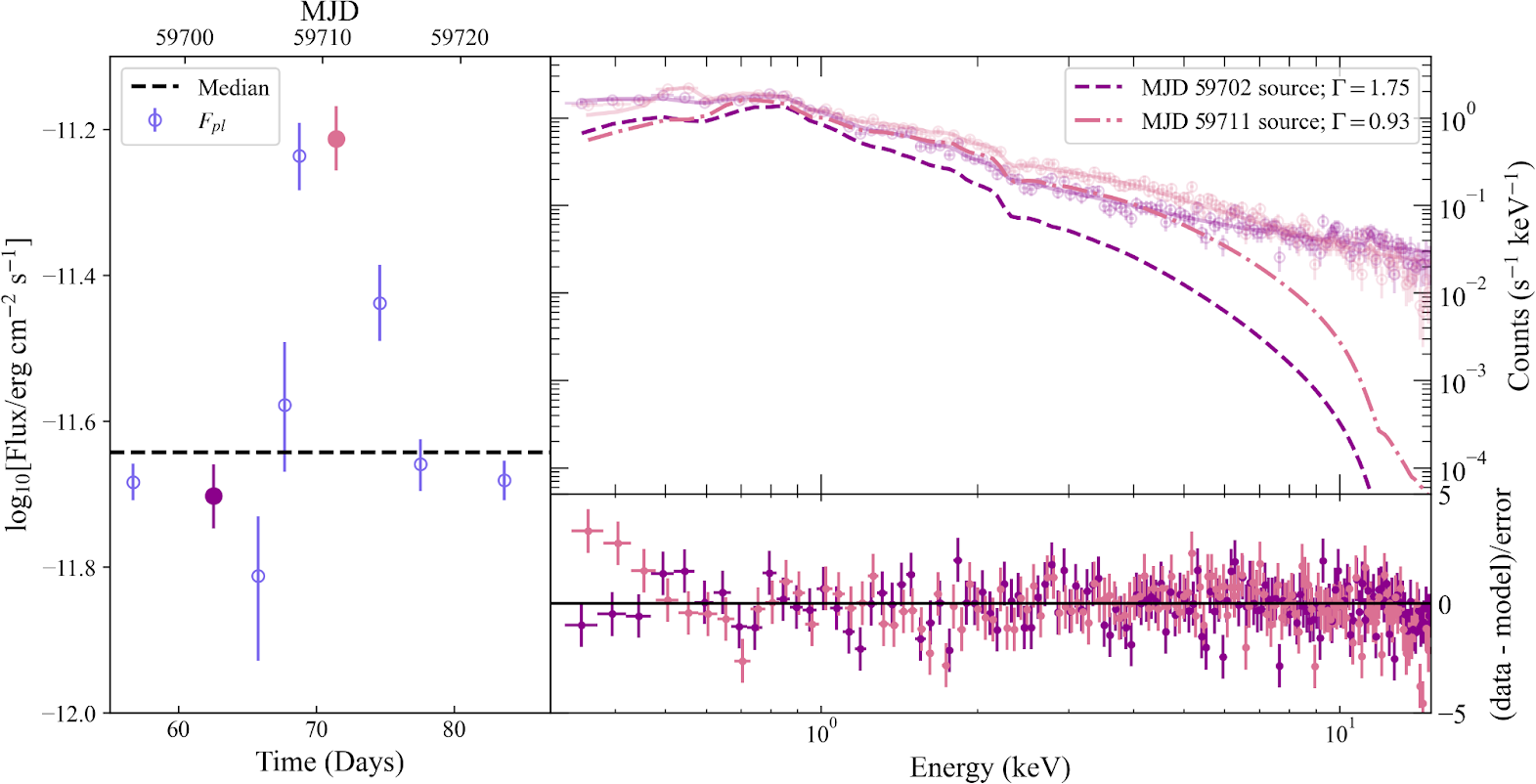NICER / ISS Science Nugget
for March 20, 2025
Preparing for the Sombrero's shadow
The activity of supermassive black holes (SMBHs), which anchor most galaxies, undergoes cyclical "flickering," oscillating between lower and higher accretion/emission states. In the dimmer state, these low-luminosity active galactic nuclei (LLAGN) may represent the most common state of AGN activity. Understanding how LLAGN pull in and push out surrounding material is essential to interpreting the evolution of both SMBHs and their host galaxies.
In 2022, NICER spent 5 months monitoring variable X-ray emission from two AGN - the Sombrero Galaxy and IC1459 - whose SMBH shadows may be imaged by the Event Horizon Telescope (EHT, which produced the famous "orange donut" images of nearby SMBH event horizons) in the future. N. M. Ford (McGill Univ., Canada) and collaborators explore the LLAGN accretion mechanisms for these two galaxies by analyzing the NICER monitoring data, together with complementary datasets from NASA's Swift and NuSTAR telescopes, in a recently published peer-reviewed paper in The Astrophysical Journal. While EHT probes emission at submillimeter (radio) wavelengths from material just outside the SMBH, X-rays track thermal gas and accelerated inflowing and outflowing material extending to length scales of thousands of light years. Ford et al. investigate what emission region(s) and physical mechanisms determine the observed X-ray variability and spectra in anticipation of EHT observations.
The authors use NICER's SCORPEON background model for joint source-background modeling of these faint LLAGN. Both are dominated by variable non-thermal ("power law") emission from each galaxy's nucleus, with a constant thermal contribution. Sombrero shows significant aperiodic variability with approximately week-long timescales, which could indicate emission originating from the inner accretion flow around the SMBH. The power-law brightness and spectral slope are strongly anti-correlated in both sources. This behavior could be explained by a varying mass accretion rate: when the rate increases, more material falls in, leading to increased brightness as well as more chances for photons to scatter and get bumped to higher energies (decreasing the spectral slope). In broad snapshot surveys of many LLAGN, this steep anticorrelation seems to be washed out; dedicated monitoring of individual LLAGN is needed to fully reveal the trend. Sombrero and IC1459 are now among the LLAGN with the lowest accretion rates where this strong anticorrelation is clearly observed.

Comparison of X-ray spectra acquired by NICER for the Sombrero Galaxy before and during a bright interval in May 2022. Left panel: contribution of the non-thermal ("power law") component to the overall X-ray emission, with two observations highlighted in pink and purple near the peak and median flux (dashed black line), respectively. Right panel: The spectra of the highlighted observations. Total X-ray counts as a function of photon energy are indicated with circles and best-fit models of the emission from the galaxy's nucleus are shown before (purple dashed line) and during the peak brightening (pink dashed-dotted line). The bottom panel shows data-minus-model residuals. As flux increases, the power-law-dominated slope becomes less steep (i.e., Γ decreases). (Credit Ford et al. 2025)
<< Previous
Main Index
Next >>